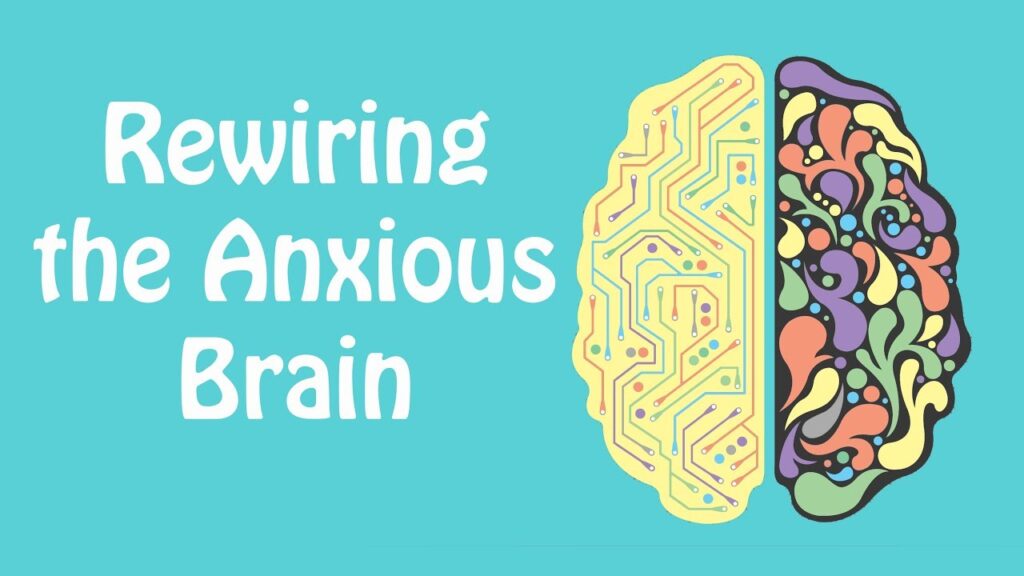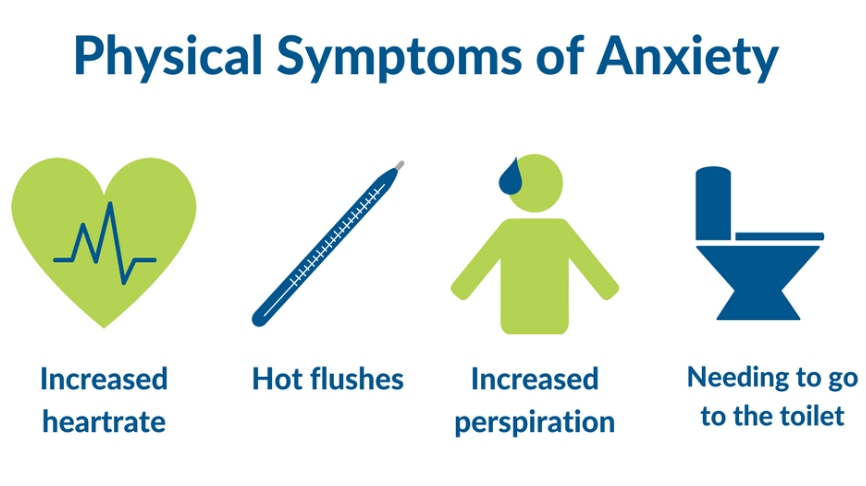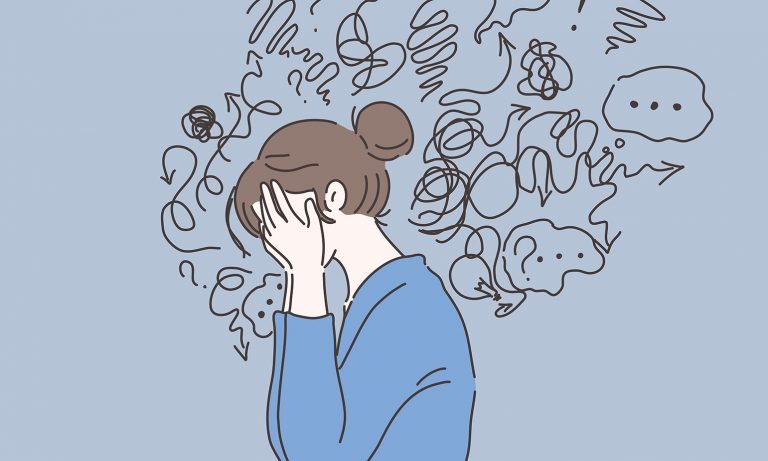Table of Contents
What Is Anxiety?
The feeling is hard to describe, some people say it is like butterflies in the stomach or an unknown dread. This experience is what we can define as Signs and Symptoms of Anxiety Disorder.
Often you feel anxious because of an upcoming event that makes you nervous, like giving a public speech, starting a new job, attending the first day of college, etc.
Getting anxious from time to time is expected. However, if the nervousness lasts for an unreasonable amount of time, you should consult a professional.

People with anxiety lasting for weeks at a time without any apparent reason suffer from an anxiety disorder. For these people, anxiety disorder symptoms are more than a passing thing.
People with Signs and Symptoms of Anxiety Disorder can experience these symptoms for more weeks, months, or years at a time. These symptoms are inconvenient and can also severely interact with a person’s day-to-day life.
Anxiety disorder is among the most common neurological health issues, along with ADHD and depression. If you frequently experience the following symptoms, try talking to a doctor to assess if you have Signs and Symptoms of Anxiety Disorder.
Signs and Symptoms of an Anxiety Disorder
Excessive worrying
Excessive worrying is among the most common Signs and Symptoms of Anxiety Disorder. Usually, the level of worry is disproportionate to the event that caused it. People often get worried about seemingly mundane things and situations that happen in everyday life.
When the worry occurs almost every day for at least six months and becomes difficult to control, doctors regard it as a generalized anxiety symptom. It also hinders the ability to complete daily tasks and makes it harder to concentrate.
People under 65 years of age are more prone to develop Signs and Symptoms of Anxiety Disorder with excessive worrying, especially those who have a lower socioeconomic status, are single, and have many life stressors.
Agitation
When a person feels anxious, the nervous system response goes into overdrive mode. This response triggers a domino effect throughout the body, which results in a racing pulse, shaky hands, sweaty palms, and dry mouth.
The body experiences these symptoms because the brain believes that the person is in imminent danger and starts preparing the body for a fight or flight response. The body diverts the blood away from the digestive system and towards the muscles to make it easier to fight or run. The heart rate also increases with heightened senses.
While these effects can help a person in an actual dangerous situation, it can be excruciating if the fear is all in the head. Studies also suggest that people with anxiety cannot calm down as quickly as those without this disorder. Meaning, the effects of stress will last for a more extended period.
Restlessness
This common symptom of anxiety is more prevalent among children and teens. People who feel this symptom describe it as the feeling of being “on edge” or having an “uncontrollable urge to move.” A study observing 128 children diagnosed with anxiety concluded that about 74% of the kids reported restlessness as a primary anxiety symptom.
Though restlessness is less common among adults, doctors still consider it one of the red flags and frequently look for it when diagnosing anxiety. If this symptom occurs to you for the better part of six or more months, you might have an anxiety disorder.
Fatigue
Getting quickly tired is another potential Signs and Symptom of an Anxiety Disorder (generalized). While usually, people associate anxiety with an urge to move and hyperactivity, fatigue can also be an essential aspect of an anxiety disorder.
For some people, fatigue can be an after-effect of an anxiety attack; for others, it can be a chronic situation. Though present in people with anxiety, experts aren’t sure if fatigue results from common anxiety symptoms like muscle tension or insomnia, or is propagated by hormonal effects of chronic stress. Nonetheless, it is crucial to remember that tiredness can also be a symptom of depression or other medical conditions. So, the mere presence of fatigue does not confirm the existence of an anxiety disorder.
Difficulty Concentrating
Often, people with anxiety report having difficulty concentrating. A study involving 157 children and teens with a diagnosed generalized anxiety disorder concluded that more than two-thirds of the participants had trouble concentrating.
Another study with 175 adults with GAD also concluded that almost 90% of the subjects reported having concentration difficulties. Some other studies established a link between anxiety and interrupted working memory. It is the memory responsible for keeping short-term information. This link might help explain the decrease in performance people experience during periods of increased anxiety.
While prominent Signs and Symptoms of Anxiety Disorder, this symptom is most closely related to people with ADHD. If doctors find this symptom, they test to determine whether it results from an anxiety disorder, ADHD, or any other medical condition.
Irritability
Excessive irritability is also a constant companion of people with an anxiety disorder. The finding of a recent study, including more than 6,000 adults, indicates that over 90% of those with GAD reported feeling highly irritable during high anxiety periods.
Compared to the level of worry reported by these people, young and middle-aged adults with these Signs and Symptoms of Anxiety Disorder reported over twice as much irritability in their daily lives. The fact that anxiety has symptoms like hyperactivity and excessive worrying makes it unsurprising that irritability is a prevalent symptom.
Muscle Tension
Frequently having tense muscles is another symptom of anxiety.
While many things can cause tense muscles, it’s unclear why stress causes this effect in people with an anxiety disorder. People with this problem tend to experience mild to severe pain and resort to pain management techniques to get relief.
The connection between muscle tension and anxiety is apparent because treating tense muscles reduces worry and stress in people with a generalized anxiety disorder.
Difficulty Falling or Staying Asleep
Sleep deprivation is often associated with anxiety, and some experts believe that childhood insomnia can contribute to anxiety disorders in adulthood.
A study observing 1,000 children over 20 years concluded that childhood insomnia was responsible for a 60% increase in the development of an anxiety disorder by age 26.
Panic Attacks
People with panic disorder (a type or Signs and Symptoms of an Anxiety Disorder) can experience recurring panic attacks. These attacks are overwhelming and produce an intense fear sensation that can be terrifying.
Rapid heartbeat, sweating, shaking, chest tightness, shortness of breath, fear of dying, losing control, or nausea are some common symptoms that accompany a panic attack. These occur unexpectedly and might last for a few minutes, usually peaking at 10-15 minutes.
Avoiding Social Situations
People with social anxiety disorder try to avoid social situations and exhibit the following signs:
· A feeling of fear about an upcoming social event
· Worried of others judging or scrutinizing them
· Fear of humiliation or embarrassment
People with this anxiety disorder appear extremely quiet and shy in groups or while meeting new people. Though they might not look distressed, inside, they feel excessive fear and anxiety.

